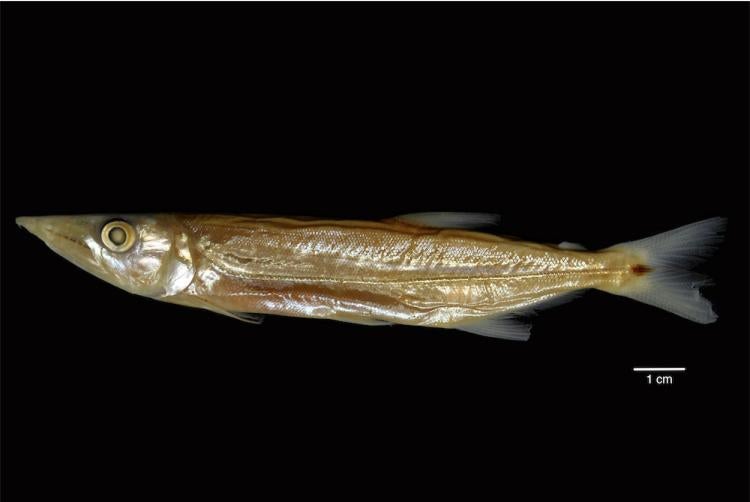The CU Museum is closed. We will be reopening soon.
During this time, collection visits will be available by appointment and other special access requests will be considered on a case-by-case basis.
Please email cumuseum@colorado.edu for more information.
Pike characin
Pike characins, Acestrorhynchus microlepis, are one of many characid species also referred to as freshwater barracudas. This specimen was collected by Max M. Ellis in 1910 while he led an exploration into the regions of the headwaters of the Amazon River under the financing of Indiana philanthropist Jake Gimbel. The Gimbel Expedition resulted in many important freshwater fish discoveries and followed along the brackish Demerara River in Guyana as well of some of its inland tributaries, such as Hubabu Creek. This particular specimen was

The pike characin belongs to the “needle jaw” Acestrorhynchidae family. Its elongated body can reach up to 15 inches in length and is punctuated by a dark blotch at the base of the caudal (tail) fin. The pike charcin’s native range is the Orinoco and Amazon Rivers of South America, though now it is also a commercially available aquarium species. This species is an obligate piscivore, feeding strictly on a diet of fish with its sharply pointed cone-shaped teeth, capable of easily crushing bone.

